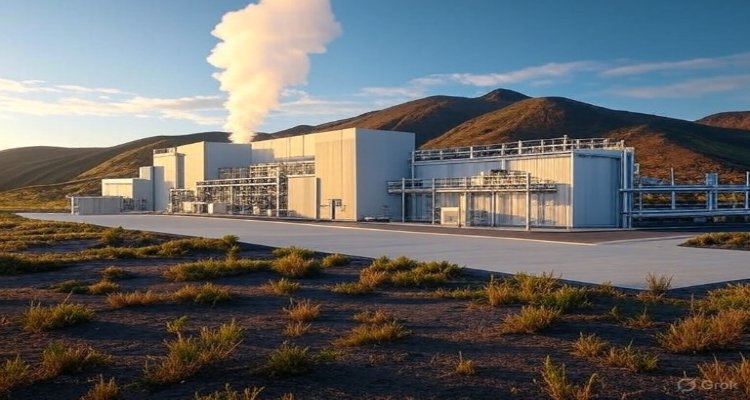From Volcanoes to Power Plants: The Untapped Geothermal Frontier

Geothermal energy, from volcanic heat to engineered reservoirs, is emerging as a powerful, untapped source for clean electricity and industrial transformation.
Introduction
Deep beneath our feet lies one of Earth’s most powerful yet underutilized energy sources—geothermal power. For centuries, volcanoes and hot springs have revealed the planet’s fiery underbelly, but only in recent decades has humanity begun to tap this constant heat for electricity. As nations race to decarbonize, geothermal energy is emerging as a compelling but often overlooked player in the global shift toward clean energy.
Context & Background
Geothermal energy is not new. Indigenous cultures across Iceland, Japan, and North America once used hot springs for bathing, cooking, and heating. By the 20th century, engineers began converting this heat into electricity, with Italy building the first commercial geothermal power plant in 1911 at Larderello, Tuscany.
Today, about 30 countries generate electricity from geothermal plants, and nearly 80 nations use geothermal heat in direct applications such as district heating, agriculture, and industrial drying. Despite its immense potential, geothermal accounts for less than 1% of global electricity generation—far behind wind and solar.
The reason is both geological and financial: while the Earth produces nearly unlimited heat, accessing it at scale requires drilling deep into hot rock—technology that has historically been expensive and high-risk.
Main Developments
Several breakthroughs are redefining geothermal’s future:
-
Enhanced Geothermal Systems (EGS): Unlike traditional geothermal plants that rely on naturally occurring hot water reservoirs, EGS involves fracturing dry, hot rock and injecting water to create artificial reservoirs. Pilot projects in the U.S., France, and Australia show promise for scaling geothermal beyond volcanic zones.
-
Superhot Rock Drilling: Recent research suggests tapping “superhot rock” at depths of 10–20 kilometers could provide 5–10 times more energy than conventional geothermal wells, potentially making it one of the most efficient clean energy sources ever developed.
-
Oil & Gas Crossover: With decades of drilling expertise, oil and gas companies like Chevron, BP, and Schlumberger are now investing in geothermal as part of their renewable portfolios, repurposing rigs, and deep-well technology.
Countries like Kenya, Iceland, Indonesia, and the Philippines already run large portions of their grids on geothermal, proving that with the right policy and investment, it can be scaled sustainably.
Expert Insight & Public Reaction
Dr. Roland Horne, a renowned geothermal expert at Stanford University, emphasizes the urgency: “We’ve only scratched the surface of geothermal’s potential. With the right technology, it could provide baseload renewable power anywhere in the world.”
Meanwhile, communities living near volcanic zones often welcome geothermal development for its economic benefits. In Kenya’s Rift Valley, geothermal has not only powered millions of homes but also created jobs, supporting agriculture and local businesses.
The public perception of geothermal is shifting, too. Unlike wind turbines or solar farms, geothermal plants are relatively discreet, with smaller land footprints and no reliance on weather. As global citizens demand stable, clean, and affordable energy, geothermal is increasingly seen as a solution with fewer trade-offs.
Impact & Implications
If the geothermal frontier can be successfully unlocked, the implications are sweeping:
-
Climate Impact: Unlike fossil fuels, geothermal is virtually emission-free once plants are operational, providing continuous “baseload” power that complements intermittent renewable sources like wind and solar.
-
Global Reach: EGS and superdeep drilling could extend geothermal potential far beyond volcanic regions, making it accessible to countries with limited natural reservoirs.
-
Energy Security: Geothermal offers local energy independence, insulating countries from volatile fossil fuel markets and geopolitical shocks.
-
Industrial Revolution 2.0: Beyond electricity, advancements in geothermal heating could revolutionize industries like cement, steel, and chemical production that currently rely on fossil-fueled heat.
However, risks remain: high upfront costs, drilling challenges, and concerns about induced seismicity. Success depends on continued investment, technological innovation, and strong regulatory frameworks that balance progress with community safety.
Conclusion
From volcanoes to engineered reservoirs, geothermal energy represents an untapped frontier in the global clean energy revolution. As the world strives for net-zero emissions by mid-century, this constant, renewable source of heat could finally move from niche to mainstream. Whether geothermal becomes the backbone of tomorrow’s energy mix depends not on the Earth—it has always provided the heat—but on our ability to innovate, invest, and embrace the fire beneath our feet.
Disclaimer : This article is based on research and expert commentary for informational purposes only. It does not constitute investment, policy, or engineering advice. Readers should consult professionals for decisions related to energy projects or investments.









